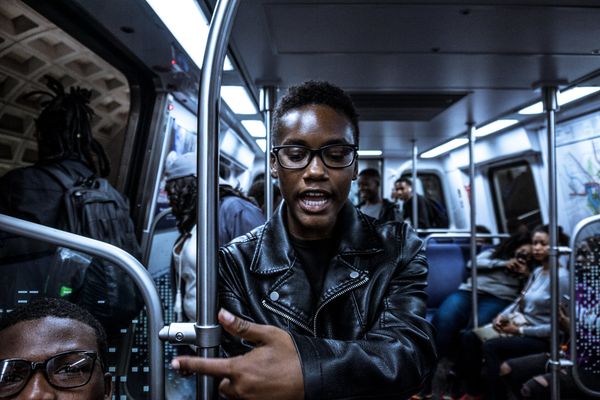When Willie Baronet sees a homeless person holding a sign that says “Homeless traveling man – please help,” he doesn’t follow the instincts of most passersby, looking away uncomfortably and walking faster. Instead, he makes an offer and a conversation.
Baronet, an artist and professor residing in Dallas, buys handmade signs from homeless people as part of an ongoing project titled “We Are All Homeless.” If they agree to sell their sign to him, he asks them to set the price. Most of them don’t ask for much—their costs almost always fall between $10 to $20.
Baronet came up with the idea of “We Are All Homeless” in 1993 as a graduate student. As he often caught himself not making eye contact with homeless people, he sought a way to confront his discomfort. It's an uneasiness and what seems like embarrassment that is shared by many of those who have never experienced homelessness. “This was a way for me to start a conversation,” says Baronet. “It was a way for me to change the dynamic between us.”
In July 2014, he and three of his friends embarked on a 24-day journey throughout the United States, getting to know vagabonds throughout the nation while shooting a documentary outlining his experiences through the course of this project. From city to city, Baronet talked to homeless people, asking to buy their signs and have them speak on camera. More than half agreed. Some declined, citing vanity and privacy as reasons for their reticence.
“We Are All Homeless” continues to teach Baronet much about both the people who he talks to and himself. People open up to him, telling him about their experiences from a homeless perspective and revealing how they came to be in those situations. A few admitted that they were on the run–sometimes from domestic violence situations, Baronet guesses. Hearing so many stories, he’s found that, “There are a lot of sad stories.”
Baronet foresees himself continuing this project “for as long as I live, apparently.” Previous exhibitions created in relation to “We Are All Homeless” include settings where homeless signs covered the floor, forcing visitors to walk on them, or where interactive surfaces invited people to write what “home” meant to them.
On January 21, another installation will be exhibited at Moravian College in Bethlehem, Pennsylvania. The journey is far from over. Baronet plans to incorporate homeless signs into quilt patterns, jewelry designs, and picture books outlining different meanings of home.
To him, it’s still about seeking new ways to present these signs to people and to appeal to their discomfort long enough for them to step back, confront, and understand.
“It’s not about whether we have a house or not,” he says. “I believe we all have human issues. It’s easy to want to say 'there’s the homeless and there are the people with homes.' And the truth is, we’re all the same. We’re all together.”





















